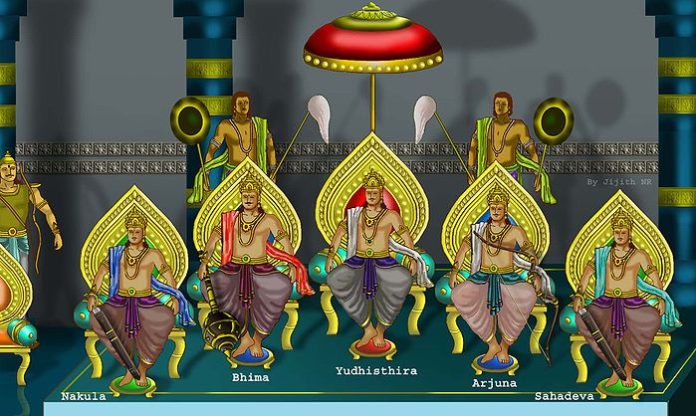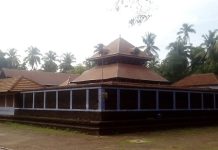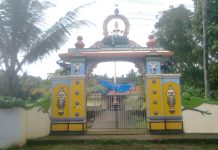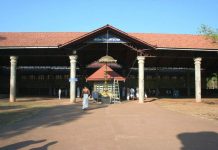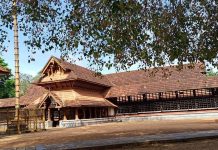The Pancha Pandavas Temples in Kerala
Pancha Pandavas Temples; Legends from the Mahabharata are an intricate part of the cultural web of India, that transcends regional and linguistic affiliations. The southern state of Kerala is an outstanding illustration of this fact. While the historic sites of Indraprasta, Hastinapura and Kurukshetra are believed to be in what is now Uttar Pradesh in Northern India, the Kathakali dance form of Kerala is one of the best forms of expression of the legends from the Mahabharatam.
Kerala has a strong temple culture, and the temples of Kerala are noted for their austerity and strict adherence to age old worship protocols. Five temples of Kerala, dedicated to Vishnu (Krishna) are connected with the Mahabharatam. Legend has it that the Pandava princes set out on a pilgrimage throughout India, after installing Parikshit as the ruler of their vast empire. During their tour of Kerala, the five brothers built a temple each. While on pilgrimage, the five Pandava brothers built a five unique Mahavisnu temples in various parts of Kerala state.
All five temples were positioned along the banks of the holy River Pamba. Yudhishtira Pandava installed Lord Visnu at Thirichittattu, less than 2 km. north of Chengannur. Bhima build a Visnu temple at Thripuliyoor. Arjuna built the Krishna Parthasaradhy Temple at Thiruarunmula. Nakula Pandava built a Visnu temple at Thiruvanvandoor. And finally, Sahadeva built a temple at Thirikudithanam. The five temples are collectively known as the Pandava Temples.
The Pamba River is the third longest river in Kerala, and is considered to be Dakshina Ganga. The Pamba originates at Pulachimalai hill, very near to Chengannur, and flows towards the coast, merging with the waters of Thottapally (Vembanad) Lake just before arriving at the sea.
The history associated with the five Pandava Temples begins following the departure of Sri Krishna from this world, which marks the official start of Kali Yuga. Wishing to pursue spiritual pursuits, and to become purified of the sins of killing family, friend, teacher, etc. during the Kurukshetra war, the Pandava brothers retired from public life. They invested Arjuna’s grandson, the young Pariksit, with the King’s crown. Taking Kripa as his advisor, Pariksit is known to have performed three aswamedha yajnas under his guidance while serving as a young king, after which he engaged in many famous pastimes as the first king of Kaliyuga. The Pandavas, meanwhile, headed towards the south. Among other stops, they spent considerable time at Kerala, engaged in their temple building pastimes.
Like the River Pamba, the Pandava Temple parikrama route takes one winding through three different districts in Kerala: Pathanamthitta, Alappuzha and Kottayam. The Pandava Temples are included among the 108 Divyadesams, or places of worship of Lord Visnu as praised by the 12 Tamil Alvars. Making pilgrimage to the five tirthas is considered highly meritorious, and is to be done in a particular order: beginning in Chengannur, first one must visit Thrichitat Temple, then Thiruppuliyoor, then Thiruvaranmula, then Thiruvanvandoor and finally Thrikkodithanam temple. It is believed to be most auspicious if one visits all five temples on the same day, each one at a particular time of day.
Not surprisingly, the order in which the five temples are to be visited follows the birth order of the five brothers. The first tirtha stop is Thirichittattu, built by the eldest Pandava brother, Yudhishtira.
On an auspicious day when all the stars and planets were favourable. Kunti gave birth to a son born of Dharma. A voice from the heaven proclaimed that this child was the perfect image of righteousness and for this quality he would be famed throughout the world. The child was named Yudhisthera.
The second tirtha to visit is Thiruppuliyoor, built by Bhima Pandava: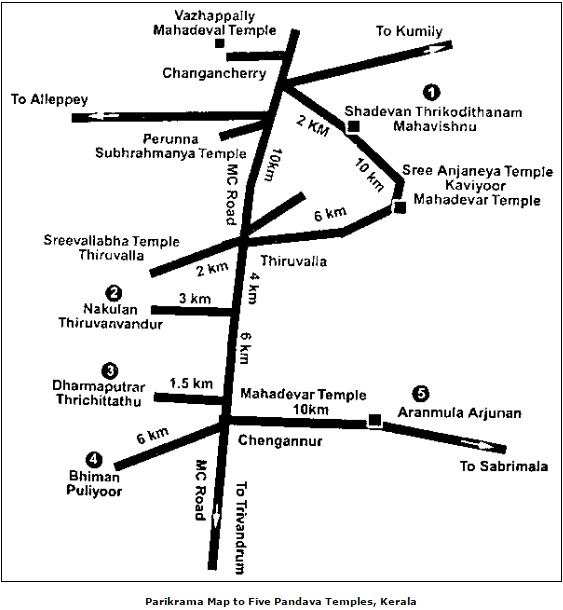
A year later the king said, I want another son, so he proclaimed, ‘When righteousness is supported by strength, nothing can withstand the combination.’ A beautiful strong son was born to Kunti. The heavens proclaimed, ‘This child will be the most powerful and most affectionate child.’ The son was called Bheema.
The third tirtha to visit is Thiruvaranmula, built by Arjuna Pandava:
A voice from the heavens proclaimed, ‘Your next son will be the conqueror of the entire world. There will be none like him. He will be a hero, invincible. His best friend will be Krishna. Because of these two men the earth will be cleansed of all its poisons which are hurting her.’ The son was called Arjuna.
The fourth tirtha to visit is Thiruvanvandoor, built by Nakula Pandava, and the fifth and final tirtha is Thrikkodithanam temple, built by the youngest Pandava, Sahadeva:
‘These two men will be the most handsome men in the world. They will be famed for their good qualities, their devotion, their bravery and wisdom.’
Pancha Pandava Temples
- Thiruchitat Maha Vishnu Temple(Yuddhishtra)
- Thiruppuliyoor Maha Vishnu Temple( Bheema)
- Thiruvaranmula Sree Parthasaradhi Temple(Arjuna)
- Thiruvanvandoor Maha Vishnu Temple(Nakula)
- Thrikkodithanam Maha Vishnu Temple (Sahadeva)


























